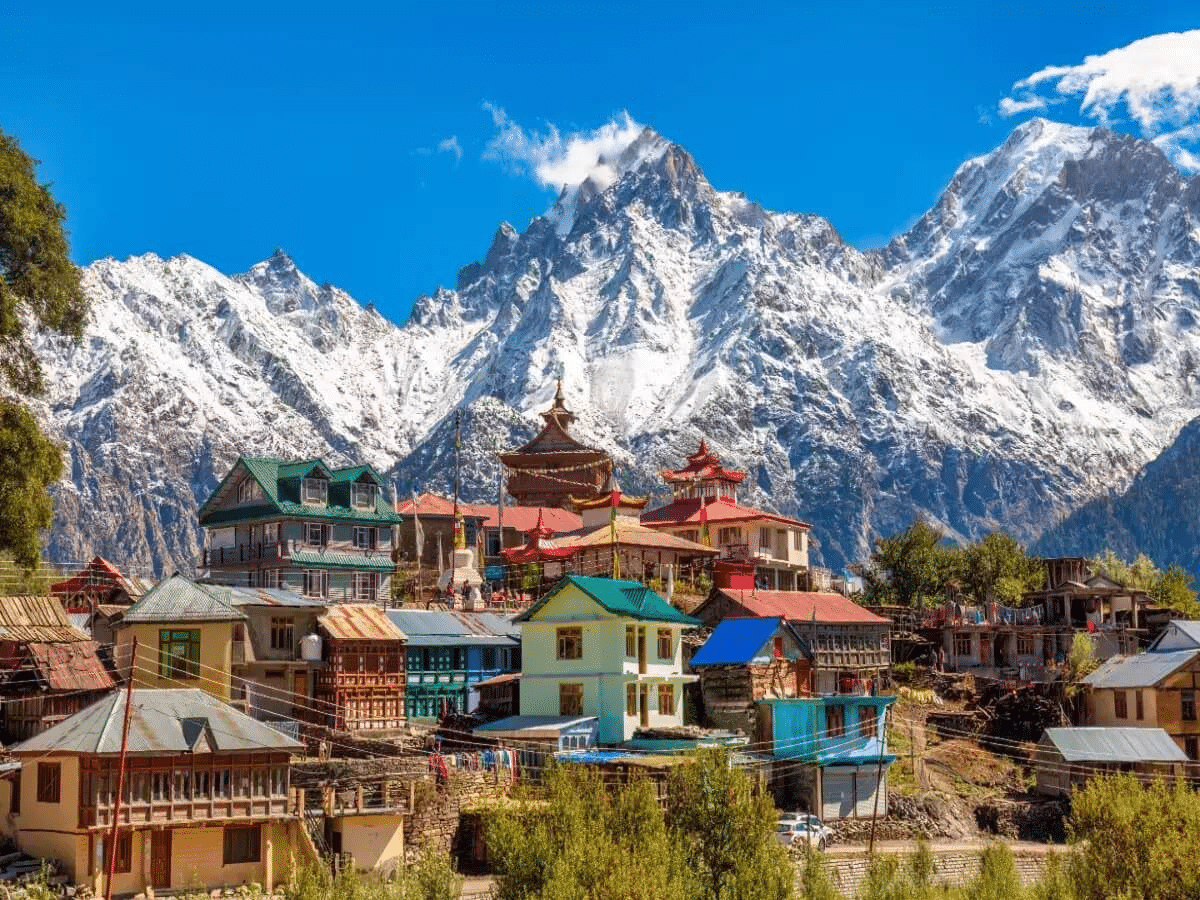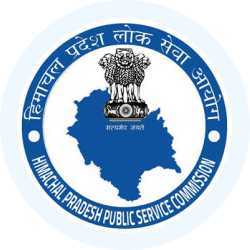HPPSC HPAS (Himachal Pardesh) Exam > HPPSC HPAS (Himachal Pardesh) Notes > HPPSC HPAS Preparation > Basic Facts about Himachal Pradesh
Basic Facts about Himachal Pradesh | HPPSC HPAS Preparation - HPPSC HPAS (Himachal Pardesh) PDF Download
Himachal Pradesh, a state in northern India, has a rich cultural and geographical landscape. Let’s explore its various aspects, from its formation to its natural features, and understand what makes this region unique.

Formation and Capital
- Formation of Himachal Pradesh: Himachal Pradesh was officially formed as a state on 25th January 1971. Before gaining full statehood, it was a union territory. The statehood day of Himachal Pradesh is celebrated annually on 25th January.
- Capital: The capital of Himachal Pradesh is Shimla, which is a well-known hill station and was once the summer capital of British India. Shimla has a rich history and is a center for tourism, education, and culture in the state.
Geographical Location and Altitude
- Latitude and Longitude: Himachal Pradesh lies between the latitudes of 30°22' to 33°12' North and longitudes of 75°47' to 79°04' East. This geographical positioning gives the state its mountainous terrain and varied climate.
- Altitude Range: The altitude in Himachal Pradesh varies widely, ranging from 350 meters to 7025 meters above sea level. This vast difference in elevation results in diverse landscapes, from low-lying valleys to towering peaks like the Reo Purgyil, the state's highest point.
Question for Basic Facts about Himachal PradeshTry yourself: What is the altitude range of Himachal Pradesh?View Solution
Area and Forest Coverage
- Total Geographical Area: Himachal Pradesh covers a total area of 55,673 square kilometers, which accounts for 1.7% of India's total geographical area.
- Forest Area: A significant portion of the state's land, 37,033 square kilometers or 66.5% of the total area, is covered by forests. These forests are rich in biodiversity and are home to various wildlife species, supporting both the environment and local economies.
Districts and Population Distribution
- Number of Districts: Himachal Pradesh is divided into 12 districts. Each district has its unique culture, dialect, and traditions.
- Largest and Smallest Districts by Area:
- The largest district in terms of area is Lahaul-Spiti, covering 13,833 square kilometers. This district is known for its cold desert landscape and sparse population.
- The smallest district is Hamirpur, with an area of 1,118 square kilometers. Despite its smaller size, Hamirpur is densely populated and plays a significant role in the state's political and social landscape.
Important Celebrations
- Statehood Day: Every year, the Statehood Day is celebrated on 25th January to commemorate the day Himachal Pradesh became a state in 1971.
- Himachal Day: Another significant day is Himachal Day, celebrated on 15th April. This day marks the formation of the state as a province in 1948 after India gained independence.
Question for Basic Facts about Himachal PradeshTry yourself: Which district in Himachal Pradesh is the largest by area?View Solution
State Symbols
- State Bird: The state bird is the Jujurana (Western Tragopan), a rare and endangered species found in the higher altitudes of the state. It is often called the "King of Birds" due to its vibrant plumage.
- State Flower: The Pink Rhododendron, a flowering plant that thrives in the hilly regions of Himachal Pradesh, is the state flower.
- State Animal: The Snow Leopard is the state animal. It resides in the cold, mountainous regions and is a symbol of the state's natural beauty and biodiversity.
- State Tree: The Deodar, a type of cedar tree, is the state tree. It is highly valued for its wood and is often associated with the state's temples and heritage sites.
Neighboring States
- Boundaries: Himachal Pradesh is surrounded by several Indian states:
- Punjab lies to the west.
- Jammu & Kashmir is to the north.
- Haryana is situated to the south.
- Uttarakhand lies to the south-east.
- Uttar Pradesh touches a small part of the state's southern border.
- This diverse neighborhood has led to a variety of influences in Himachal Pradesh's culture, languages, and economy.
Languages Spoken
- Official Language: The official language of the state is Hindi, which is used for most administrative purposes.
- Other Languages: Several regional languages and dialects are spoken across Himachal Pradesh, such as:
- Pahari (a group of North Indian languages)
- Mahasui
- Kulluyi
- Lahauli
- Kinnauri
- Sirmauri
- Chambyali
- Bilaspuri
- Kangri
- Mandiyali
- Dogri
- English is also spoken widely, especially in urban areas and by the educated population.
Question for Basic Facts about Himachal PradeshTry yourself: Which is the official language of Himachal Pradesh?View Solution
Political Representation
Lok Sabha Constituencies: Himachal Pradesh has four Lok Sabha constituencies, which are:
- Hamirpur
- Mandi
- Shimla
- Kangra
- These constituencies play a crucial role in electing representatives to the Indian Parliament.
- Rajya Sabha Constituencies: The state also has three Rajya Sabha constituencies. Members of Rajya Sabha are elected by the state's legislative assembly.
The document Basic Facts about Himachal Pradesh | HPPSC HPAS Preparation - HPPSC HPAS (Himachal Pardesh) is a part of the HPPSC HPAS (Himachal Pardesh) Course HPPSC HPAS Preparation.
All you need of HPPSC HPAS (Himachal Pardesh) at this link: HPPSC HPAS (Himachal Pardesh)
FAQs on Basic Facts about Himachal Pradesh - HPPSC HPAS Preparation - HPPSC HPAS (Himachal Pardesh)
| 1. हिमाचल प्रदेश की राजधानी क्या है और इसकी स्थापना का वर्ष क्या है ? |  |
Ans. हिमाचल प्रदेश की राजधानी शिमला है, और इसकी स्थापना 15 अप्रैल 1948 को हुई थी।
| 2. हिमाचल प्रदेश में कुल कितने जिले हैं और उनकी जनसंख्या वितरण कैसे है ? |  |
Ans. हिमाचल प्रदेश में कुल 12 जिले हैं। जनसंख्या वितरण विभिन्न जिलों में भिन्न है, जहाँ कांगड़ा और शिमला जिले में सबसे ज्यादा जनसंख्या है, जबकि लाहौल-स्पीति और किन्नौर जैसे जिलों में जनसंख्या कम है।
| 3. हिमाचल प्रदेश में कौन-कौन से महत्वपूर्ण त्योहार मनाए जाते हैं ? |  |
Ans. हिमाचल प्रदेश में विभिन्न महत्वपूर्ण त्योहार मनाए जाते हैं, जैसे कि लोहड़ी, मकर संक्रांति, दशहरा, और नवरात्रि। इनमें स्थानीय संस्कृति और परंपराओं का विशेष महत्व है।
| 4. हिमाचल प्रदेश के राज्य प्रतीक क्या हैं ? |  |
Ans. हिमाचल प्रदेश के राज्य प्रतीक में राज्य का झंडा, राज्य फूल (बुरांश), और राज्य पशु (हिमालयन ब्लू शीप) शामिल हैं। ये प्रतीक राज्य की पहचान और सांस्कृतिक धरोहर को दर्शाते हैं।
| 5. हिमाचल प्रदेश में कौन-कौन सी भाषाएँ बोली जाती हैं ? |  |
Ans. हिमाचल प्रदेश में मुख्यतः हिंदी और पंजाबी बोली जाती हैं, इसके अलावा, स्थानीय भाषाएँ जैसे कि डोगरी, पहाड़ी, और बघठरी भी बोली जाती हैं।
Related Searches
















